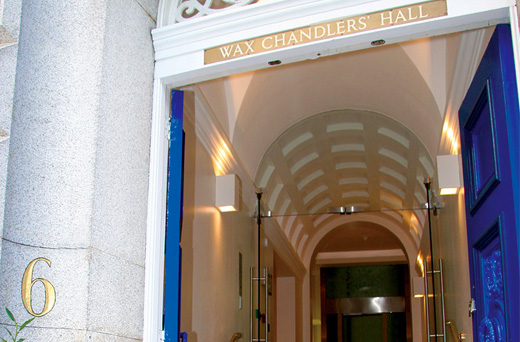Trade and membership
The Wax Chandlers Company originated in a ‘fraternity’, an association of tradesmen and craftsmen formed for mutual support and spiritual benefit. Beeswax was very important to fraternities, whose observances required the consumption of such quantities of tapers, torches and candles that subscriptions and fines for misdemeanours were often payable in the commodity. Beeswax candles, the luxury article compared with tallow (obtained by rendering animal fats and considerably cheaper than beeswax), were used extensively by the church, court and nobility.
The rise of the Wax Chandlers’ Company corresponded with the proliferation of trade and parish fraternities in London, and the increasingly elaborate religious ceremonials of the late C14 and C15. ‘Proper and seemly funerals’ called for enormous tapers and churches and altars were lit all day every day and ornamented with numerous wax images.
In early days tradesmen were known as cirgers (French ecclesiastical candle – cierge) and the label ‘Wax Chandler’ did not come into use until the 1330’s. Sometimes they were simply described as chandlers, although this was more usually applied to tallow chandlers. The original business of a Wax Chandler included different forms of lighting such as torches and tapers; embalming and the preparations for funerals; wax images and mould-making, and wax for document seals and wax writing tablets. The Wax Chandlers were also a minor medical guild.
Its members, like those of most other companies, never restricted their activities to the trades directly controlled by the Wax Chandlers’ Company. They were often involved in related activities which we associate with other Livery Companies such as the Apothecaries, Grocers, Salters, Tallow Chandlers and Barber-Surgeons. In Paris for example, the wax chandlers were one of four trades grouped in the Epiciers-Apothecaires: Spicers, Apothecaries, Wax Chandlers and Confectioners.
The link between all four trades was, of course, the bee, since beeswax was regarded as a spice in the Middle Ages, and honey was used extensively in the preparations of the Apothecary and the Confectioner. In Newcastle the Wax Chandlers were grouped with the Barber-Surgeons, Tallow Chandlers and Wig Makers.


